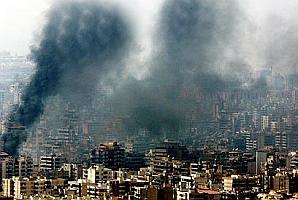- a particular form of photography which is concerned with the collection of images to tell a story.
- used to chronicle significant and historical events.
- Timeliness-the images have meaning the context of a recently published record of events.
- Objectivity-the situation implied by the images is a fair and accurate representation of the events they depict in both the content and tone.
- Narrative-the images combine with other news elements to make facts relateable to the viewer or reader on a cultural level.
- accurately describe otherwise unknown, hidden, forbidden or difficult-to-access places or circumstances.
- The photographer attempts to produce truthful, objective, and usually candid photography of a particular subject, most often pictures of people.
Social Documentary
- is a critical genre of photography which is dedicated to the life of underprivileged or disadvantaged people.
- Became known after the FDA commissioned photographers to document the lives of the poor farmer, resulting in some of the best known photographs in the world today.
Ethics
Works within the same ethical approach to objectivity that are applied by other journalists. Because the reporting is mainly image-based, photomanipulation or false/misleading captioning is a very fraught subject, with the 2006 Lebanon war photograph controversies being some of the more publicised misrepresentation and photomanipulated images of recent times. Freelance photographer Adnan Hajj was fired by the Reuters news agency for admitting to using Photoshop to add and darken smoke in a photograph of Beirut to make the damage appear worse.

the doctored photograph

a comparison of the original and doctored photograph
To be perfectly honest, I don't actually know how Hajj thought he would get away with this very inept example of Photoshopping an image-its quite clearly been edited with the clone tool and the use of photoshop is basic at best.
The U.S. National Press Photographers Association, and other professional organizations, maintain codes of ethics to specify approaches to these issues.
Code of Ethics
Visual journalists and those who manage visual news productions are accountable for upholding the following standards in their daily work:- Be accurate and comprehensive in the representation of subjects.
- Resist being manipulated by staged photo opportunities.
- Be complete and provide context when photographing or recording subjects. Avoid stereotyping individuals and groups. Recognize and work to avoid presenting one's own biases in the work.
- Treat all subjects with respect and dignity. Give special consideration to vulnerable subjects and compassion to victims of crime or tragedy. Intrude on private moments of grief only when the public has an overriding and justifiable need to see.
- While photographing subjects do not intentionally contribute to, alter, or seek to alter or influence events.
- Editing should maintain the integrity of the photographic images' content and context. Do not manipulate images or add or alter sound in any way that can mislead viewers or misrepresent subjects.
- Do not pay sources or subjects or reward them materially for information or participation.
- Do not accept gifts, favors, or compensation from those who might seek to influence coverage.
- Do not intentionally sabotage the efforts of other journalists.
- Strive to ensure that the public's business is conducted in public. Defend the rights of access for all journalists.
- Think proactively, as a student of psychology, sociology, politics and art to develop a unique vision and presentation. Work with a voracious appetite for current events and contemporary visual media.
- Strive for total and unrestricted access to subjects, recommend alternatives to shallow or rushed opportunities, seek a diversity of viewpoints, and work to show unpopular or unnoticed points of view.
- Avoid political, civic and business involvements or other employment that compromise or give the appearance of compromising one's own journalistic independence.
- Strive to be unobtrusive and humble in dealing with subjects.
- Respect the integrity of the photographic moment.
- Strive by example and influence to maintain the spirit and high standards expressed in this code. When confronted with situations in which the proper action is not clear, seek the counsel of those who exhibit the highest standards of the profession. Visual journalists should continuously study their craft and the ethics that guide it.
This is the code of ethics that I will endeavour to adhere to with this assignment, it is incredibly detailed and a very good set of rules to go by, teaching photographers how to treat their subject professionally, sympathetically and honourably.
As for equipment, the traditional tools used by photojournalists are:
- 35mm film camera
- Black and white film
- 50mm prime lens (usually F1.8 to capture scenes in low light)
I was toying with the idea of going with film for this assignment, but in the end decided against it as I have very limited experience with film and thought that this assignment was too important to risk getting it all wrong. I will be using a Canon 5Dmk2 and primarily a 50mm F1.8 lens-all the portraits will be done using this lens, with a few shots, mainly the exterior and a couple of the interior shots, using a 28-105mm F4.0 to get a wider angle. I wont be editing any of the colour images, being used direct from camera (apart from lens correction) and the black and white shots will be unedited apart from the colour conversion.
Getty Images' editorial policy.
No comments:
Post a Comment